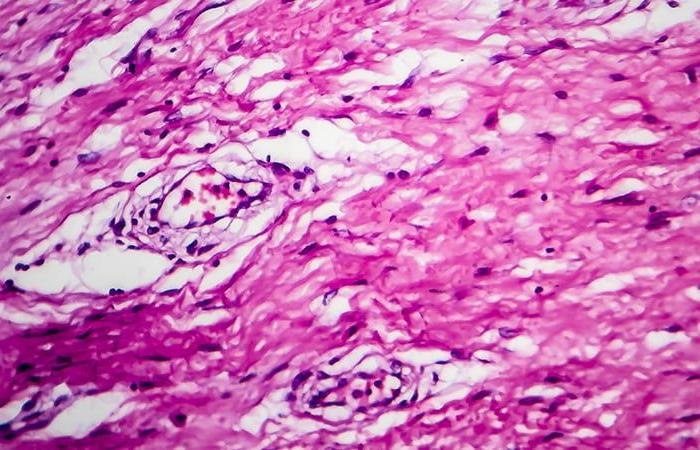The eBEACOPP protocol was developed by the German Advanced Hodgkin’s Disease Study Group. The goal of this intensive regimen is early and definitive control of the disease, and excellent progression-free survival (PFS) rates are achieved. However, this treatment is cumbersome and often leads to persistent organ dysfunction, which can affect the quality of life of patients.
CD30 is highly constitutively expressed in Hodgkin lymphoma and is an attractive therapeutic target for antibody-drug conjugate products, such as brentuximab vedotin, which has shown a favorable effect as monotherapy in relapsed or refractory Hodgkin lymphoma.
The BrECADD regimen contains bentuximab vedotin
The authors developed the BrECADD regimen, incorporating brentuximab vedotin with the aim of replicating the high efficacy of eBEACOPP while reducing acute and late or persistent treatment-related toxicities. In addition, a therapeutic approach guided by PET after 2 cycles (PET-2) could improve the benefit/risk ratio compared to eBEACOPP.
The study is a randomized multicenter phase 3, involving newly diagnosed patients with advanced classical Hodgkin lymphoma, adults aged ≤ 60 years, with an ECOG performance status ≤ 2. Definition of stages advanced included stages III/IV Ann Arbor as well as stage II B with large mediastinal mass. The randomization involves 1,482 patients (eBEACOPP=740, BrECADD=742), median age 31 years.
Similar answers
BEACOPP includes etoposide (200 mg/m² from D1 to D3), doxorubicin (35 mg/m² on D1), cyclophosphamide (1250 mg/m² on D1), bleomycin (10 mg/m² on D8), vincristine (1.4 mg/m² on D8), procarbazine (100 mg/m² from D1 to D7), and prednisone (40 mg/m² from D1 to D14).
BrECADD includes brentuximab vedotin (1.8 mg/kg on D0), etoposide (150 mg/m² from D1 to D3), cyclophosphamide (1250 mg/m² on D1), doxorubicin (40 mg/m² on D1), dacarbazine ( 250 mg/m² on D2 and D3), and dexamethasone (40 mg/m² from D1 to D4).
Cycles are administered 21 days apart, with G-CSF. Depending on the toxicities, the doses of etoposide, cyclophosphamide, doxorubicin are reduced.
Negative PET-2 was observed in 64% of patients in both groups, who received only 4 cycles of treatment. Similar complete remission rates were observed at the end of chemotherapy (eBEACOPP 80%, BrECADD 82%).
Consolidation radiotherapy was recommended in the presence of a positive residual on PET in 17% of patients in each group.
Less toxicities
Hematological toxicity occurred in 52% of patients in the eBEACOPP group, vs 31% of the BrECADD group, reflected by the reduction in red blood cell transfusions (52% vs 24%) and platelets (34% vs 24 %).
The incidence of grade ≥3 infections was similar (eBEACOPP 19%, BrECADD 20%). Dose reductions were more frequent with eBEACOPP than with BrECADD. Full dose treatment on 4th cycle was administered to 59% of patients in the BEACOPP group vs 78% of patients in the BrECADD group.
In PET-2 positive patients, full dose treatment on 6th cycle could be administered to 43% of patients in the BEACOPP group vs 67% of patients in the BrECADD group.
Peripheral neuropathy of any grade was documented in 49% of patients in the eBEACOPP group and 49% in the BrECADD group.
One year after the end of treatment, toxicities had completely resolved or had become grade 1 in 93% of patients in the eBEACOPP group and 96% of patients in the BrECADD group.
Better efficiency
Final analysis shows the superiority of BrECADD with a 4-year PFS rate of 94.3% in patients in the BrECADD group vs 90.9% among those in the eBEACOPP group
PET-2 negativity was associated with favorable PFS in both groups, 96.8% for BrECADD and 92.9% for eBEACOPP at 4 years.
For PET-2 positive patients, the 4-year PFS is 90.3% for BrECADD and 87.8% for eBEACOPP,
The overall 4-year survival rates are 98.6% for BrECADD and 98.2% for Ebeacopp.
After 4 years, recovery of gonadal function is more frequent after BrECADD than after eBEACOPP, both in women (95.3% vs 72.5%) than among men (86
% vs 39,2 %).
And 2th neoplasia was observed in 2% of patients in the eBEACOPP group and 3% in the BrECADD group,
This trial showed, in adult patients with newly diagnosed classical Hodgkin lymphoma, that BrECADD had superior efficacy in terms of PFS and better treatment tolerability, compared to eBEACOPP. This better PFS is found in PET-2 negative patients as for PET-2 positive patients. Hematological tolerance to BrECADD treatment is better, there is no difference in organ toxicities, particularly concerning peripheral neuropathies, or alteration of gonadal function but recovery of this is earlier.






